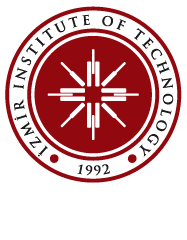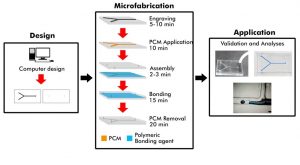Biosensor Technologies and Biomedical Applications
Development of Plasmonic, Colorimetric, Fluorometric and/or Spectrophotometric Bioassays
Detection and quantification of several markers are integral parts of every study that aims the development of a novel sensor platform or sensing methodology to be used in or in contact to a biological system. However functions, molecular structures, and physicochemical properties of these markers show a vast difference. Several methods have been and currently are being developed as potential bioassays for various markers. In our laboratory we aim to develop rapid, simple, and sensitive bioassays with a possible point of care application. Our work covers markers especially that are known to be in relation with cancer diagnosis; or diagnosis and response assessment of rare diseases.
Those markers include proteins, amino acids, heavy metal ions, and whole cells. For this purpose we utilize a wide set of biorecognition interfaces and sensing agents such as gold nanoparticles, fluorescent based methodologies, enzymatic assays, and magnetic levitation based sensing systems.
We combine biomimetic approach with materials science, surface chemistry and microfabrication technologies to develop next generation point of care diagnostic tools.
Fabrication of Microfluidic and Paper Based Biosensor Platforms
Recent developments in diagnostic technology exhibits great potential to diagnose and monitor various diseases. In particular microfluidics and paper based sensor platforms are easy-to-use, inexpensive, rapid, sensitive, and specific standalone platforms.
Current developments in surface chemistry techniques and micro/nanofluidic technologies target challenges integrated with point of care diagnostics. Demand to these devices and sensor platforms have increased greatly in last decades. Hence there is a need for development of cost-effective and rapid prototyping methodologies, in each of the aforementioned application fields.
In our laboratory we spend out best effort to improve both sensor platform systems and their fabrication processes; for more sensitive, accurate, and precise sensors and more rapid, inexpensive, and practical fabrication processes. We develop micro-engineered sensor systems that can accurately diagnose the disease at clinical resolution.
Magnetic Levitation Based Sensor Platform Developement
Magnetic levitation (MagLev) provides a density based measurement method which is considerably sensitive and versatile. The fundamental of the technique is maintaining a magnetic field overcome gravitational acceleration; and mimic a studying medium without gravitational effects . This phenomenon is generally reached by utilizing magnets, and simplest form is two dipole magnets oriented facing each other’s same poles. A paramagnetic medium is used to levitate objects with diamagnetic properties; this provides a simple and sensitive technique which can be used to measure small differences in density of levitated objects. As an object is levitated at a fixed height in study medium, based on its density; when the density increases the levitation height decreases and vice versa.


